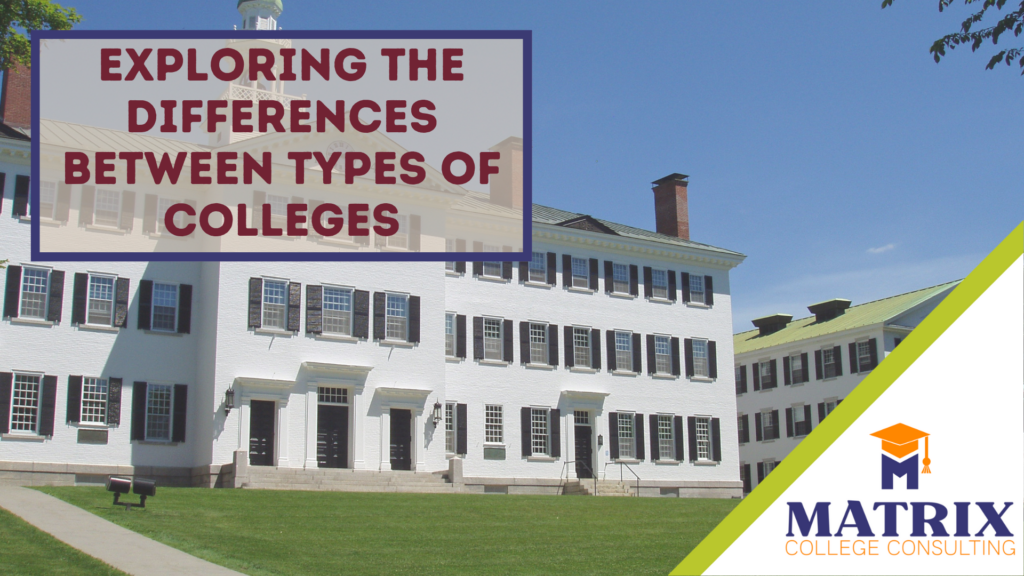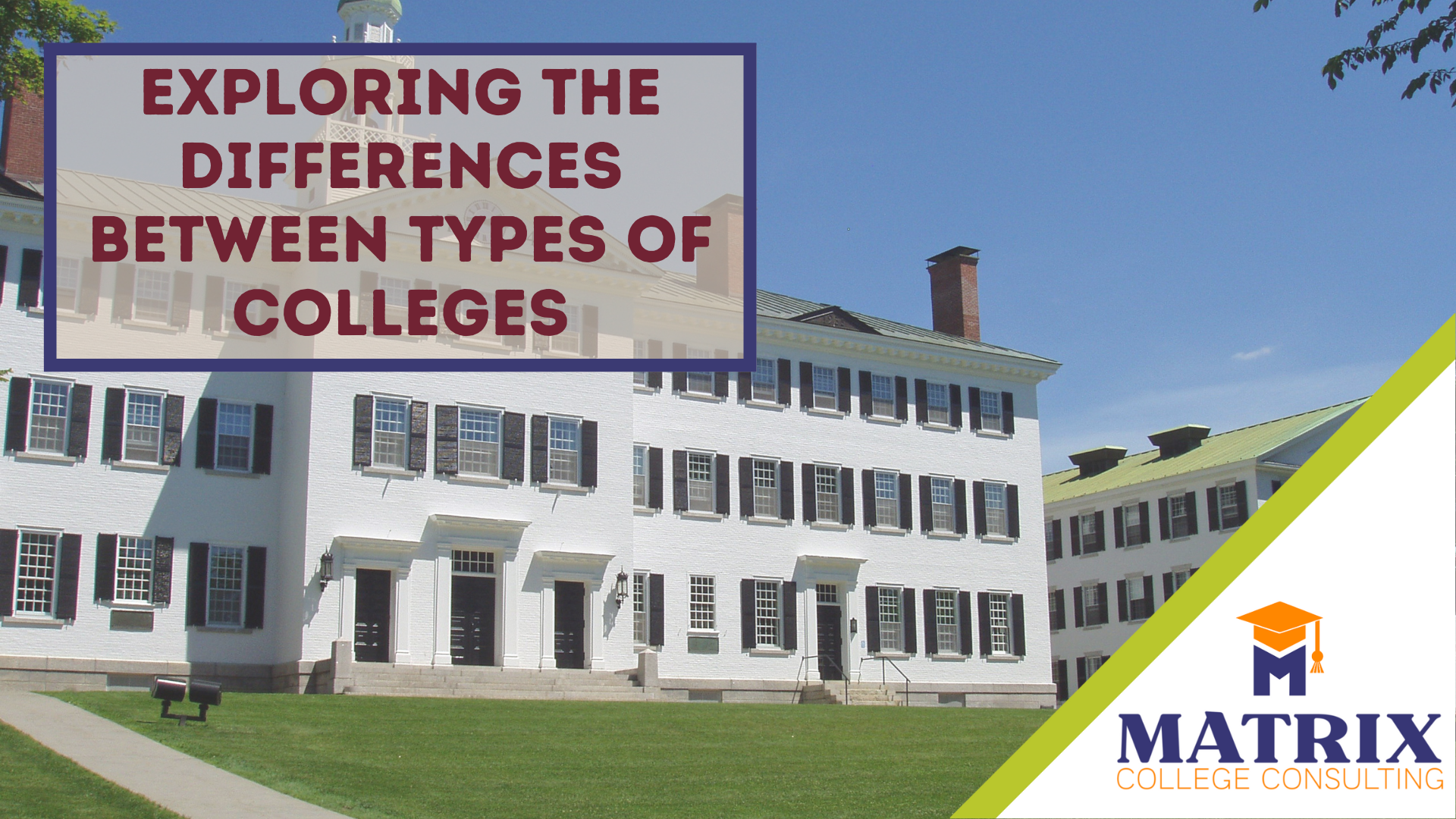Colleges come in many types, each serving different educational needs and student goals. Here’s a breakdown of the main differences:
1. Public vs. Private Colleges

Public Colleges: Funded by state governments, these colleges typically have lower tuition for in-state residents (e.g. The Ohio State University, University of Maryland).
Private Colleges: Rely on tuition, donations, and endowments, often smaller with a more personalized experience but usually higher tuition (e.g. Case Western Reserve University, Denison).
2. Community Colleges vs. Four-Year Colleges
Community Colleges: Offer two-year associate degrees and certificates, with lower tuition and transfer pathways to four-year universities.
Four-Year Colleges: Offer bachelor’s degrees and sometimes graduate programs, focusing on a broader educational experience. (Note: “Colleges” are usually smaller institutions, often with just undergraduate programs, whereas “Universities” are usually bigger with options for graduate-level coursework.)
3. Liberal Arts Colleges vs. Research Universities

Liberal Arts Colleges: Emphasize broad-based education in humanities, sciences, and social sciences (e.g. Amherst, Williams).
Research Universities: Focus on specialized programs, graduate studies, and research opportunities (e.g. MIT, Northeastern). (Note: Often research universities will have a Carnegie Research Classification, which classifies according to spending and doctorate production.)
4. For-Profit vs. Non-Profit Colleges
For-Profit Colleges: Operate as businesses, often with online or vocational programs, but may lack accreditation or job placement support (e.g. DeVry, Full Sail).
Non-Profit Colleges: Reinvest money into academics and student services rather than shareholders. Most of the colleges in the U.S. fall into this category.
5. Historically Black Colleges and Universities (HBCUs) & Hispanic-Serving Institutions (HSIs)
HBCUs: Established to serve Black students, offering strong community and culture (e.g. Howard University, Spelman College).
HSIs: Serve a significant number of Hispanic students, often with programs tailored to their needs (e.g. Arizona State, UC Santa Barbara).
6. Religious vs. Secular Colleges
Religious Colleges: Have affiliations with specific faiths and may integrate religion into the curriculum (e.g. Notre Dame, Brigham Young University). (Note: Many colleges that are faith-based welcome students of all faiths as well as non-believers.)
Secular Colleges: No religious affiliation.
7. Specialized Colleges

Technical & Trade Schools: Focus on career-specific skills in areas like mechanics, healthcare, or IT (e.g. cosmetology schools, culinary institutes). These are often much shorter than a 4-year institution.
Art & Design Colleges: Specialize in visual arts, performing arts, or design (e.g., Rhode Island School of Design, Juilliard).
Military Colleges: Prepare students for careers in the military and can lead to a commission as an officer (e.g. West Point, The Citadel).
If you have any questions on college guidance or would like recommendations based on your interests or career goals, please reach out to me for a free consultation.





